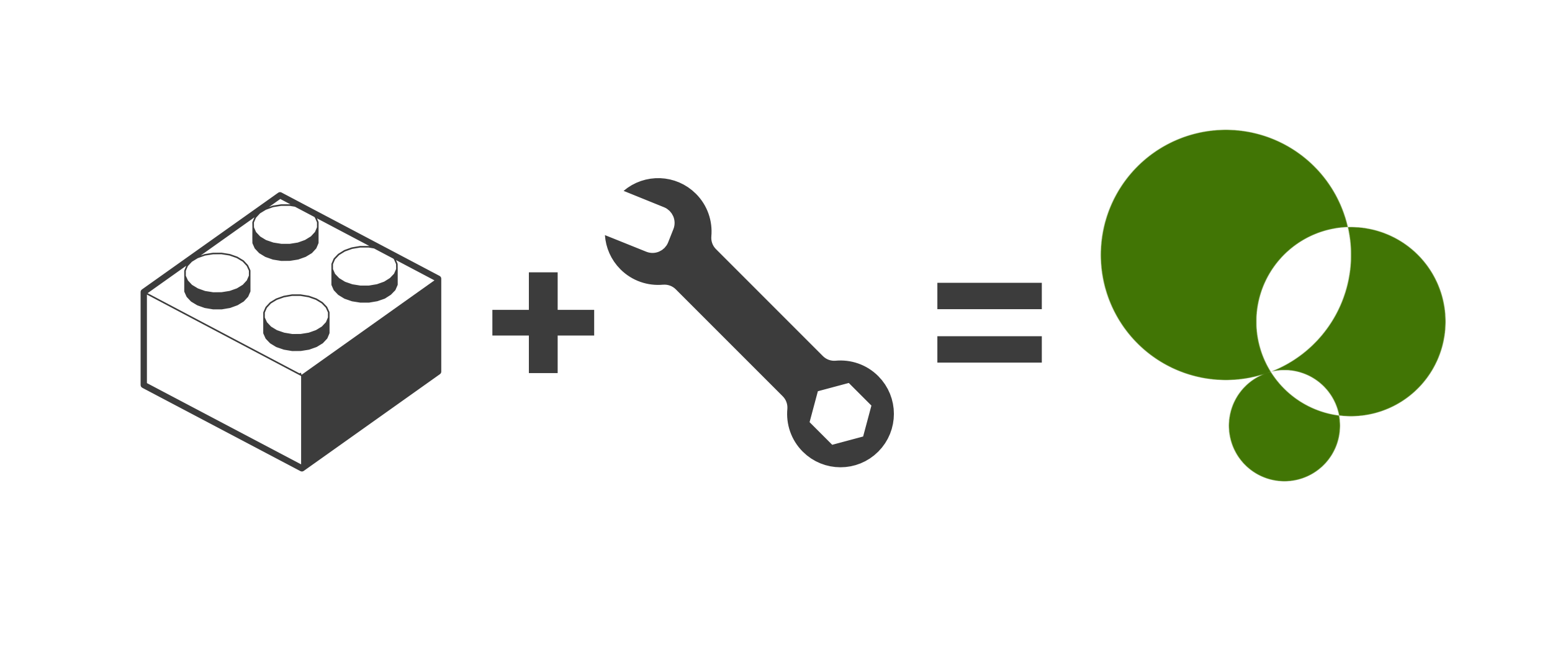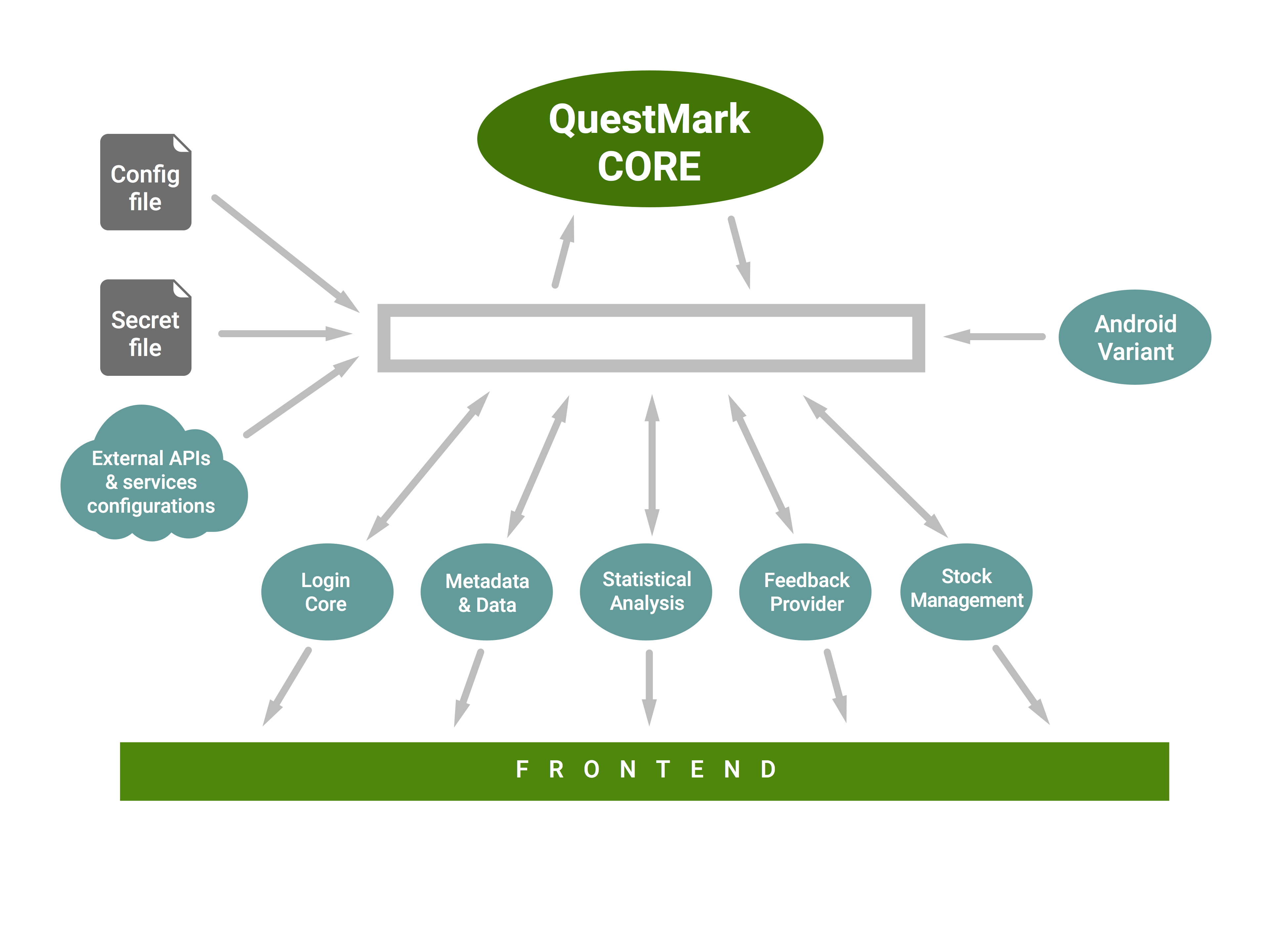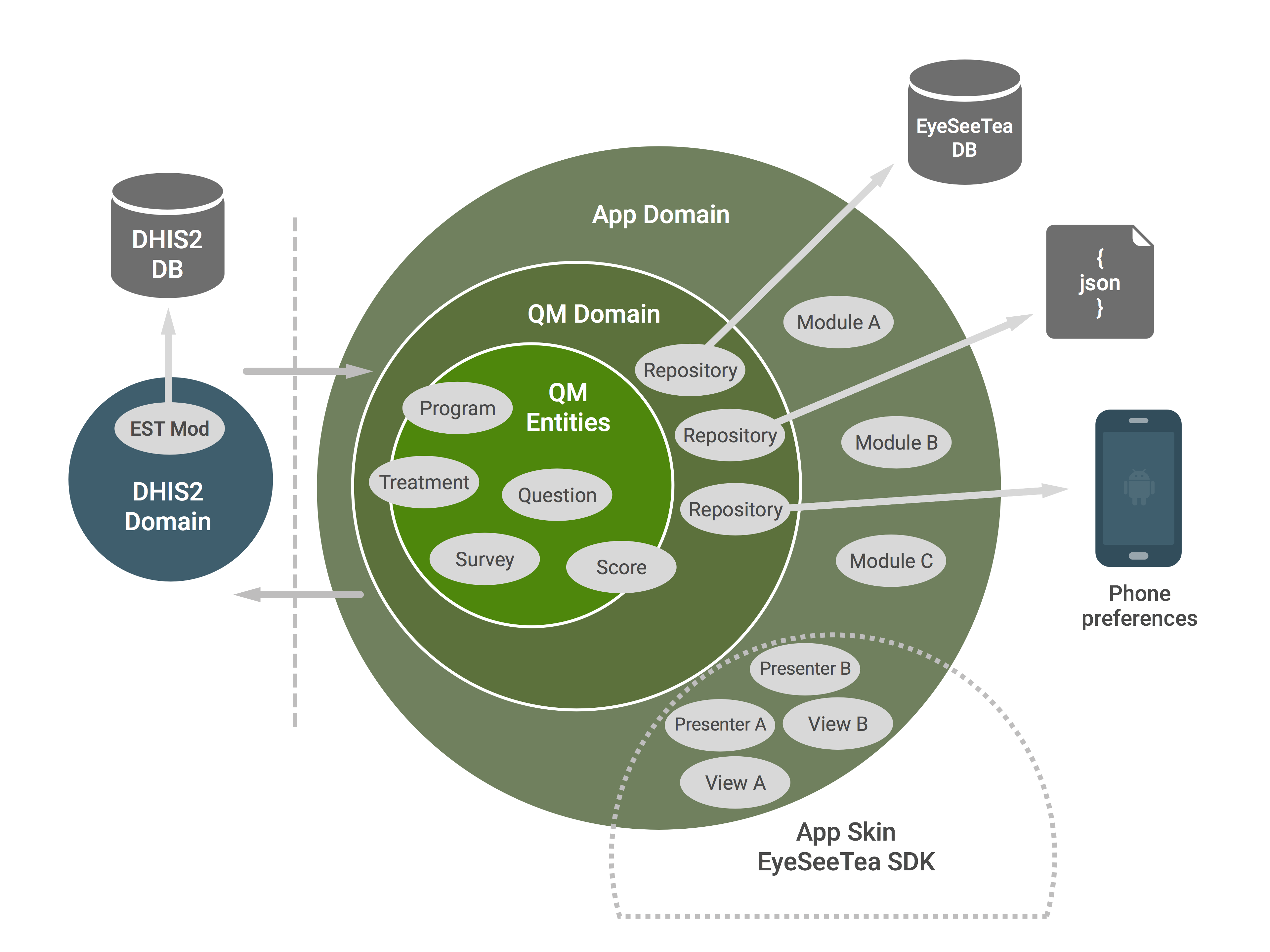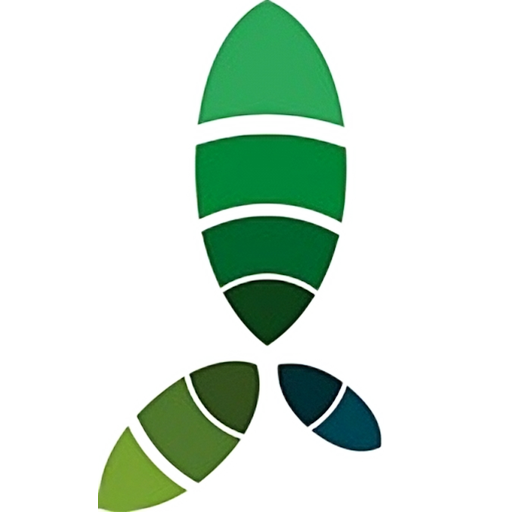QuestMark is not an app but a framework to build an app.
QuestMark (QM) aims to provide a new Android platform to NGOs, research organisations, international consultants, and other data warehouse server developers. QM translates DHIS2 concepts into intuitive processes covering the following key functions: Data Collection (e.g. for Malaria Case Surveillance apps), Monitoring and Evaluation (e.g. for Quality Assessment Tools) and Logistics Management Information System (e.g. for per-clinic stock control). This is accomplished by relying on the combination of a modular system and a clean internal architecture to properly separate the responsibilities of the different pieces. QuestMark is an open source framework for developing Android applications, which are capable of generating graphical interfaces after a synchronization process, based on DHIS2 data and metadata.
EyeSeeTea started developing QuestMark back in 2015 in the context of the PSI HNQIS project. Afterwards, Save the Children Myanmar and the University of Oslo also contributed. There is a growing community of volunteers involved in the project.




